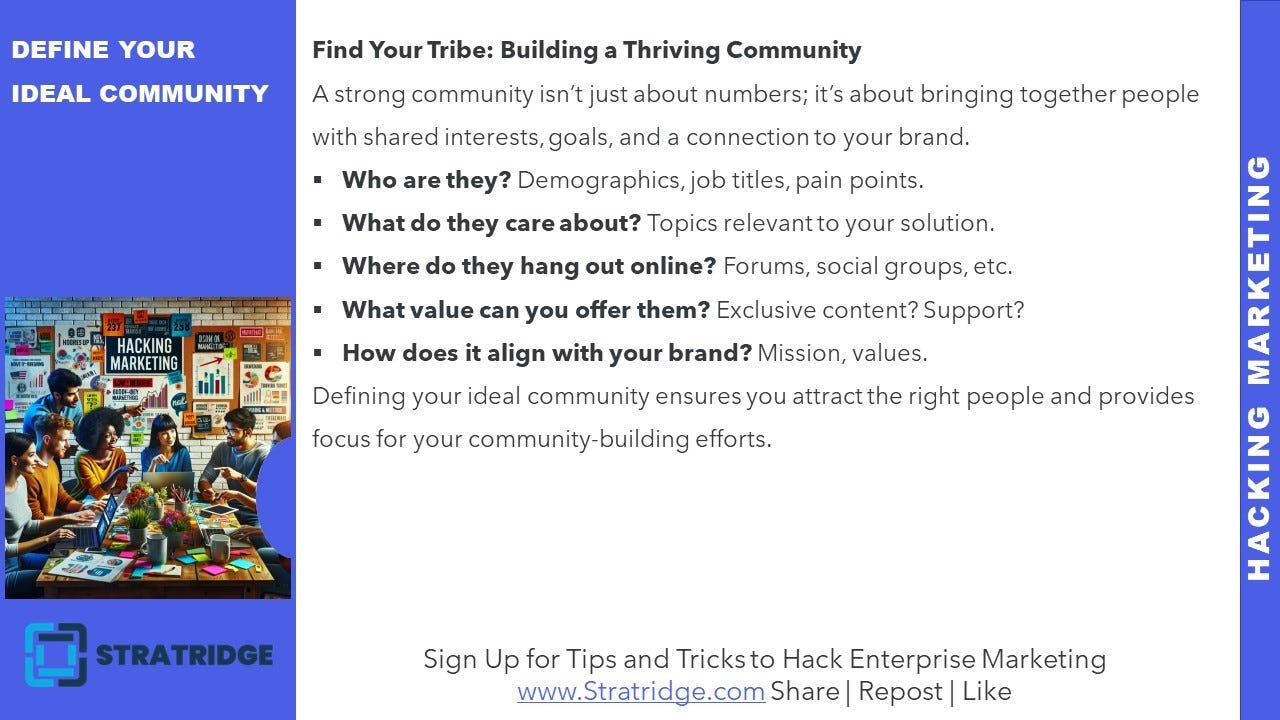In the dynamic world of digital marketing, the power of community has never been more critical. Building a robust community around your brand isn't just about increasing your customer base; it's about creating a vibrant group of engaged individuals who share common interests and values. This community can dramatically amplify your brand's reach, deepen customer loyalty, and provide invaluable feedback and support. Here is the process of identifying, understanding, and nurturing your ideal community, aligning it closely with your brand's ethos and goals.
The Importance of a Targeted Community Approach
A well-defined community can transform a simple customer base into a loyal tribe that advocates for and supports your brand. Such communities drive organic growth through word-of-mouth, enhance brand credibility, and improve customer retention. The community becomes a customer base and a critical resource for innovation and feedback, which can lead to improved products and services.
Steps to Building Your Ideal Community
Identify Your Community Members:
Demographic Details: Understand who your community members are in terms of age, profession, geographical location, and other demographic factors. This information helps tailor your marketing and community engagement strategies.
Common Challenges: Identify the challenges or pain points your community members face that your product or service aims to solve. Addressing these specific issues can make your community feel understood and cared for.
Understand Their Values and Interests:
Shared Interests: Determine what drives your community members beyond just the need for your product or service. This could include lifestyle choices, hobbies, or broader interests related to your industry.
Core Values: Align your community-building efforts with your brand's core values and ethics. Members are more likely to stay engaged if they see that the community's values reflect their own.
Determine Where They Converge Online:
Preferred Platforms: Research and identify where your potential community members are most active online. This could be on traditional social media platforms like Facebook, Instagram or specialized forums and online groups.
Engagement Strategies: Develop specific strategies tailored to each platform, whether creating interactive content, hosting live sessions, or providing forums for discussion.
Offer Exclusive Value:
Content and Resources: Provide valuable content that is exclusive to community members. This might include in-depth guides, educational content, webinars, or early access to new products.
Support and Networking Opportunities: Create opportunities for members to connect with experts within your brand. Networking can be facilitated through online meetups, user groups, or Q&A sessions with your team.
Align Community Efforts with Brand Mission:
Mission-Driven Community Building: Every community engagement aspect should reflect and promote your brand's mission and values. This consistency ensures the community feels integral to the brand rather than just an afterthought.
Feedback Loop: Establish mechanisms for community feedback to flow back to your brand. This could involve regular surveys, feedback sessions, or incentive-driven feedback programs.
Implementing Your Community Strategy
Community Management: Assign dedicated team members or hire community managers to nurture and grow the community. These individuals should be well-versed in your brand's ethos and skilled in communication and engagement strategies.
Regular Interaction: Keep the community active with regular updates, events, and interactions. Consistency is vital to keeping the community engaged and feeling valued.
Monitor and Adapt: Use analytics tools to monitor the health and growth of your community. Be prepared to adapt your strategies based on what works best for engaging your members.
Building a thriving community around your brand is a strategic process beyond simple marketing efforts. It requires a deep understanding of who your community members are, what they value, and how they interact. By strategically engaging with your community and aligning its growth with your brand's mission, you can create a robust ecosystem that supports commercial goals and fosters genuine relationships and loyalty. This approach not only enhances brand visibility but also creates a loyal customer base that is invested in the success of your brand as much as their satisfaction.
For more marketing tips, tutorials, templates, and tricks, please subscribe to https://www.stratridge.com


